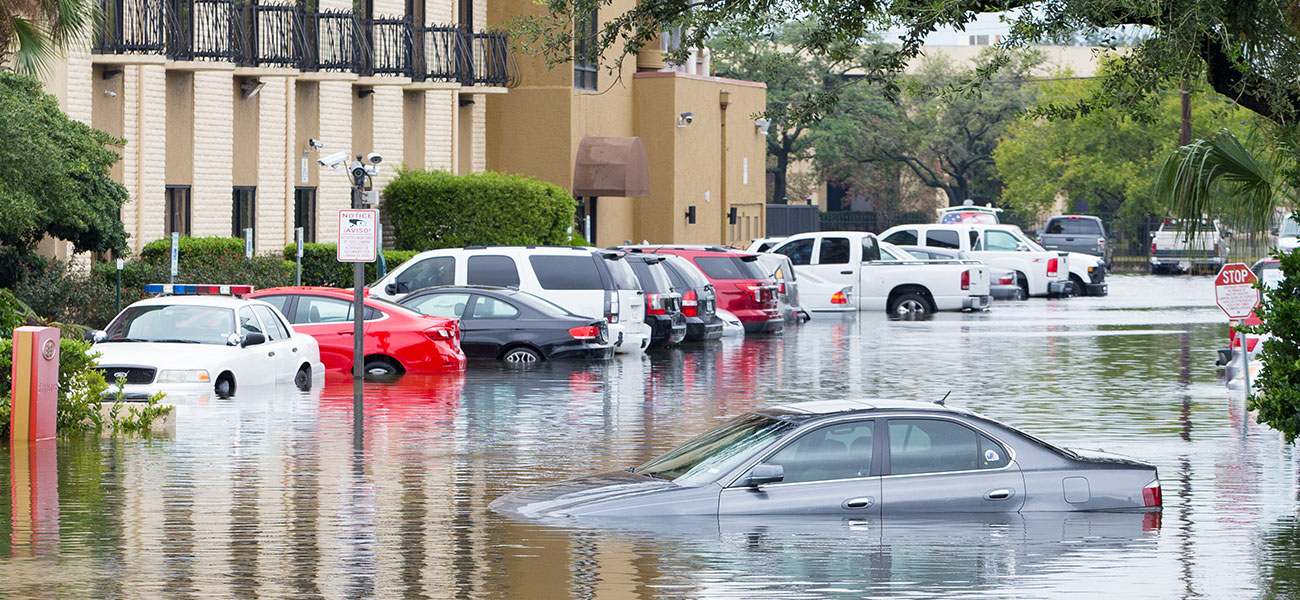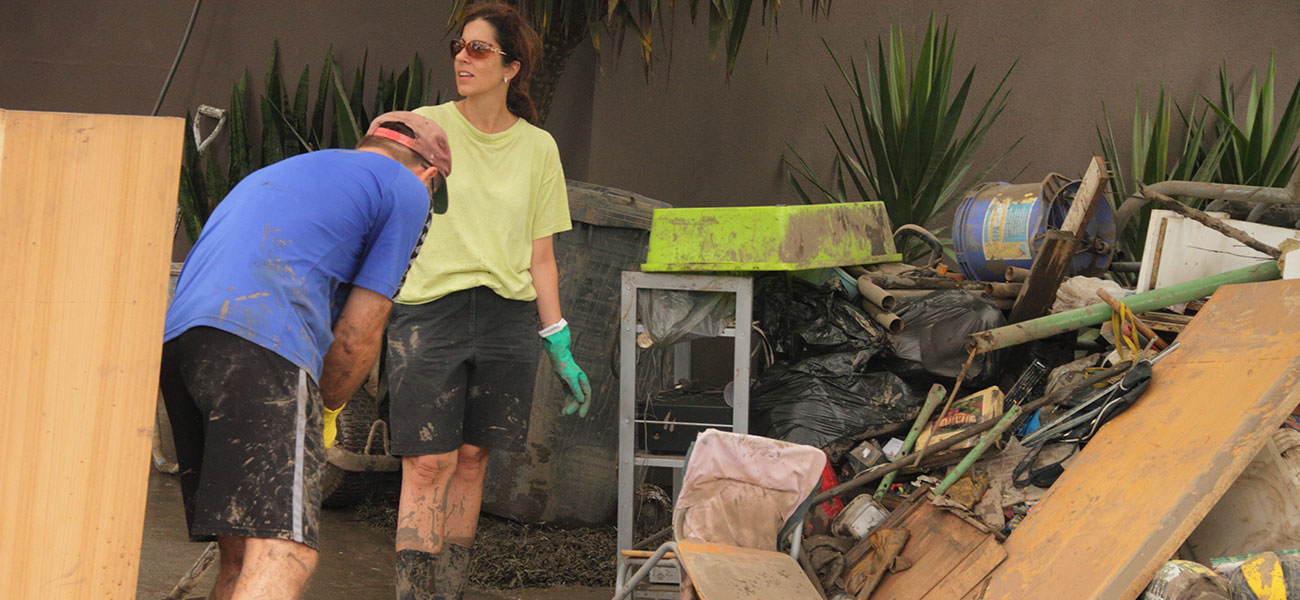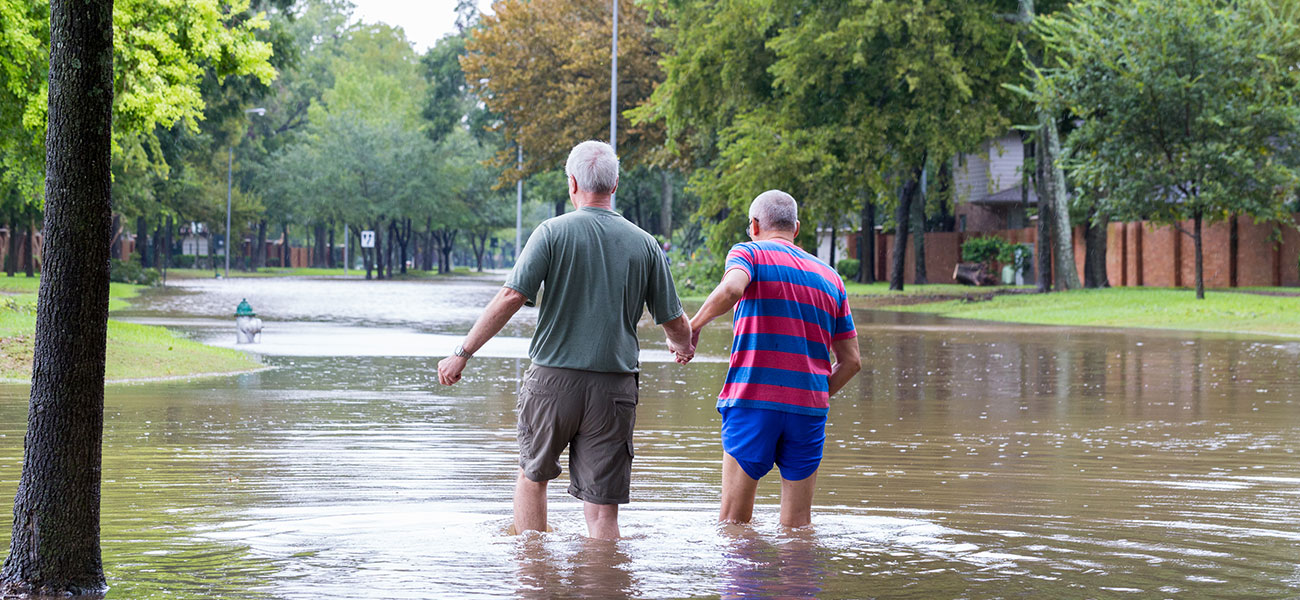Emergency Preparation

Second Order Dangers to be Aware Of
Flooding can cause damages to property that have significant consequences for your health and safety. It is essential to take the proper precautions when assessing the extent of damage.
If you know that the building – whether a home or business – includes hazardous materials such as asbestos, lead (pipes or paint), wood treatment chemicals, retardant chemicals, or fiberglass, do not attempt to remove or alter these materials in any way. Consult with a professional environmental consultant company to do that for you. Naturally, after a flood event, most companies will be inundated with calls for assessment and/or removal, so expect longer wait times for the company to send someone over to look at your property.
Additionally, you or a professional should assess the stability of plaster and drywall. Any bulging or swelling ceilings indicate damage that should be removed. Press upward on drywall ceilings. If nail heads appear then the drywall will need to be re-nailed but can be saved. But remove wet drywall and insulation well above the high-water mark. And to prevent warping of wooden doors, remove and disinfect all knobs and hardware, and lay flat and allow to air dry completely.
When in doubt, ask a professional.

Floodproof your Home
Floodproofing your home can reduce the risk of significant damages. If your home is located in the 100-year floodplain, there is a 26 percent chance that it will flood over the course of a 30-year mortgage.
Often, landscaping or other home improvements can help protect property from flood. Below are two guides, one to help you prepare your home before a coastal storm event, and the other for retrofitting your home to meet National Flood Insurance Program standards after a flood event.
The Texas General Land Office (GLO) created the Homeowner’s Handbook to prepare Texans for coastal natural hazards in the state. The guide covers what kind of natural hazards to be prepared for, emergency supplies and kits, how to prepare your house for a storm, and information on mitigation and recovery programs for after events. Additionally, the guide includes emergency contact information and a checklist for how to be prepared. This is a curated must-read guide for all Texan’s preparing for a coastal storm.
FEMA (Federal Emergency Management Agency) has produced a helpful guide to understanding the different methods to consider when retrofitting your home to make it more resilient to flood. The guide goes over the following methods in detail:
- Raising your home
- Relocation of your home
- Demolition
- Wet Floodproofing (making portions of your homes resistant while allowing flood water to enter)
- Dry Floodproofing (sealing your home to all flood water)
- Barrier Systems (floodwall or levee)

Help Your Neighbors
Often, landscaping or other home improvements can help protect property from a flood. FEMA (Federal Emergency Management Agency) has produced a helpful guide to understanding the steps that both homeowners and renters can take to develop greater resilience.
Preparing Children for a Natural Hazard
Disasters can be scary for children, but preparing children before a hurricane or other flood event can help them better adapt to the situation when they know what to expect. The Centers for Disease Control (CDC) has gathered several activities including games, readings, activity books and coloring pages to help guide parents’ discussion about natural hazards with children.